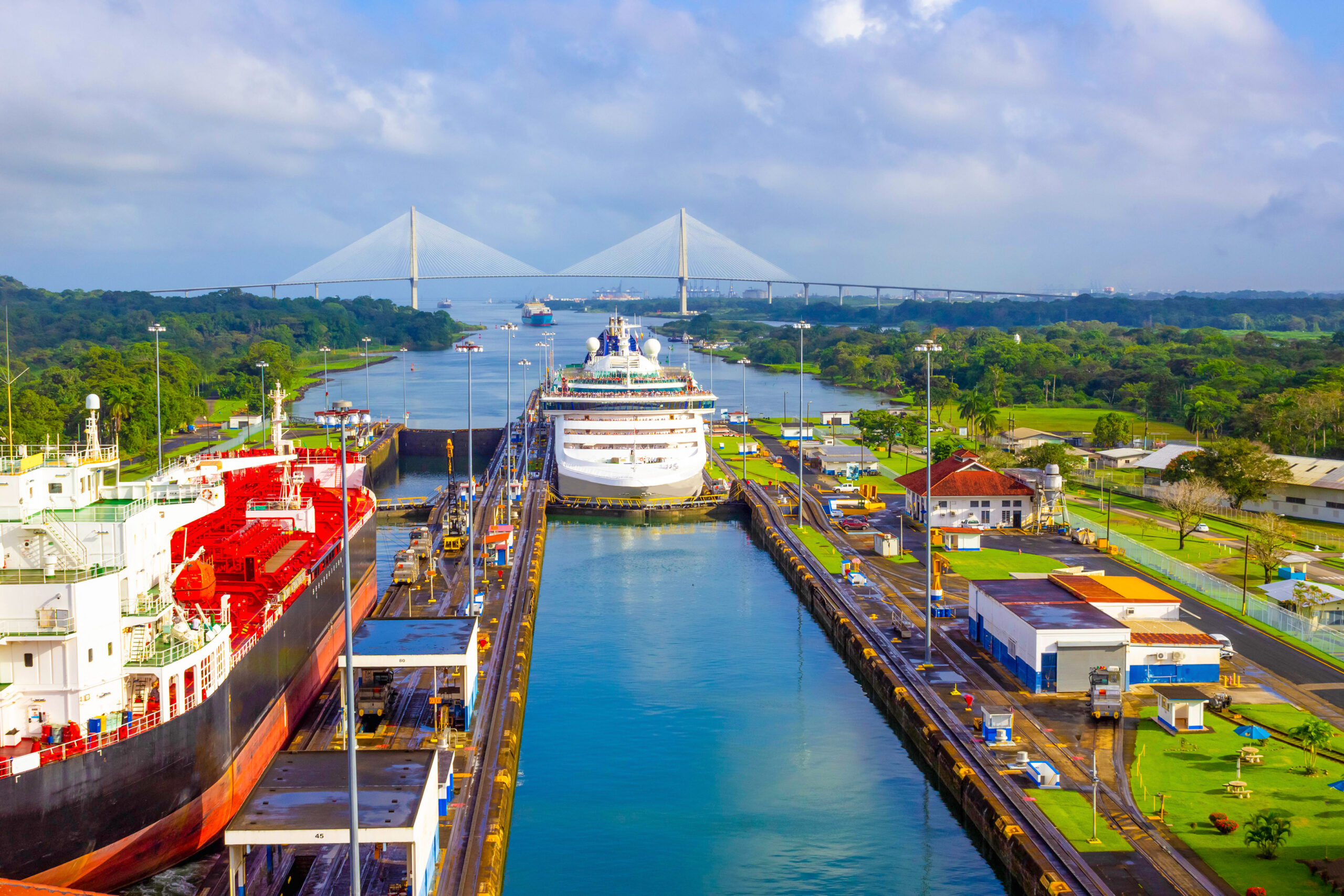The Panama Canal, a marvel of engineering and an important symbol of international trade celebrated its 109th anniversary this year since its inauguration on August 15, 1914. This blog post will highlight its importance to global logistics as the waterway creates a commercial connection between the Atlantic and Pacific oceans.
Throughout its over one-hundred-year history, the canal has facilitated international trade by reducing transportation times and costs for thousands of ships that pass through its locks daily.
Panama Canal History
If a story deserves to be told and shared from generation to generation, it is undoubtedly that of the Panama Canal. With its 109th birthday in 2023, this icon of engineering and world maritime trade reminds us of the human capacity to overcome challenges and achieve feats. Its importance to global logistics cannot be overstated.
This extraordinary history of the Panama Canal began in 1880, when the Frenchman Ferdinand de Lesseps, who had successfully directed the construction of the Suez Canal in Egypt, decided to undertake the work on the Panama Canal. However, this vast and ambitious project was initially beset by financial problems, illness, and technical difficulties. Finally, in 1893, the de Lesseps company declared bankruptcy.
However, the vision of connecting two oceans to facilitate global logistics, the Atlantic and the Pacific, continued. At the beginning of the 20th century, under Teddy Roosevelt, the United States took the reins of this monumental challenge. With persistence, innovation, and a massive investment of time and resources, the dream became a reality on August 15, 1914, when the SS Ancon made the first official crossing of the Panama Canal.
A testament to resilience and achievement
Since then, the Panama Canal has grown and evolved, overcoming countless challenges while remaining a vital artery for global logistics and trade. From steamships to the shipping giants of the modern era, this milestone created an impressive nautical connection between more than 140 shipping routes and 1,700 ports in 160 different countries.
In addition to being a vital trade thoroughfare, the Panama Canal is a proud national symbol for Panamanians. In 1999, control of the canal officially passed from the US to Panama. This act was a historic milestone that reaffirmed the sovereignty and national pride of the Central American nation. Today, the canal continues to be a source of employment and economic growth for Panama and a tourist destination of worldwide interest.
Operation and characteristics of the Panama Canal
- Geographic location
The Panama Canal is located on the Isthmus of Panama, connecting the Atlantic and Pacific oceans. It extends through the Panamanian territory and crosses the province of Panama.
- Length
The Panama Canal has a total length of approximately 80 kilometers (50 miles). It is made up of a series of locks, lakes, and artificial channels.
- Main function
The primary function of the Panama Canal is to allow ships to pass between the two oceans more quickly and efficiently, avoiding the need to go around the entire American continent.
The average time to cross it is approximately 8 to 10 hours, depending on the size and speed of the boat. During this process, the ships are assisted by a system of tugs and locomotives called “mules” that guide them through the locks.
- Expansion
In 2016, the expansion of the Panama Canal was inaugurated. This allowed for the passage of larger vessels known as Neo-panamax. This expansion increased the canal’s capacity, making it a vital route for international trade and global logistics.
- Components
The canal has several fundamental physical elements that offer navigation services to all types of vessels, from small floating units to large, well-known ocean-going vessels. These elements are the locks, the navigation channels, the lakes, the anchorage areas, and the mooring stations.
There are three sets of locks: the Miraflores locks, the Pedro Miguel locks on the Pacific side, and the Gatún locks on the Atlantic side. These allow ships to ascend and descend at different levels as they pass through the canal.
Some interesting facts about the Panama Canal
- The total cost to build the Panama Canal was around $375 million (equivalent to over $9 billion today).
- More than 30,000 people are estimated to have died during the canal construction, primarily due to tropical diseases such as malaria and yellow fever.
- Protected natural areas surround the Panama Canal, such as the Soberanía National Park and the San Lorenzo National Park.
- The canal has been described as a true source of biodiversity, hosting more than 500 species of birds and 1,000 species of trees.
- In 2019, the Panama Canal recorded a record for maritime traffic, with more than 13,000 vessel transits and 450 million tons of cargo transported.
- The Panama Canal is considered one of the seven wonders of the modern world by the American Society of Civil Engineers.
- The highest cost paid for a single Canal transit was $829,468 for the Norwegian Pearl cruise ship in 2010.
- Richard Halliburton paid the lowest toll in the canal’s history, just 36 cents. He decided to swim across in 1928.
- Each ship that passes through the Panama Canal is raised and lowered 85 feet.
Pivotal infrastructure for global logistics and international trade
The Panama Canal has played a pivotal role in global logistics and world trade history for more than a century. Its construction and operation have been a testament to engineering and human determination to overcome seemingly insurmountable challenges. In addition to shortening distances for commerce, the Panama Canal has become a symbol of unity and collaboration between nations.
As the Panama Canal celebrates its 109th anniversary, it is essential to recognize its lasting impact on the global economy and international business. As a true wonder of the modern world, the canal continues to push boundaries and adapt to the changing needs of the maritime industry, establishing a legacy that transcends geographic and cultural boundaries.
In order to explore opportunities for investment in Panama, contact LATAM FDI.


